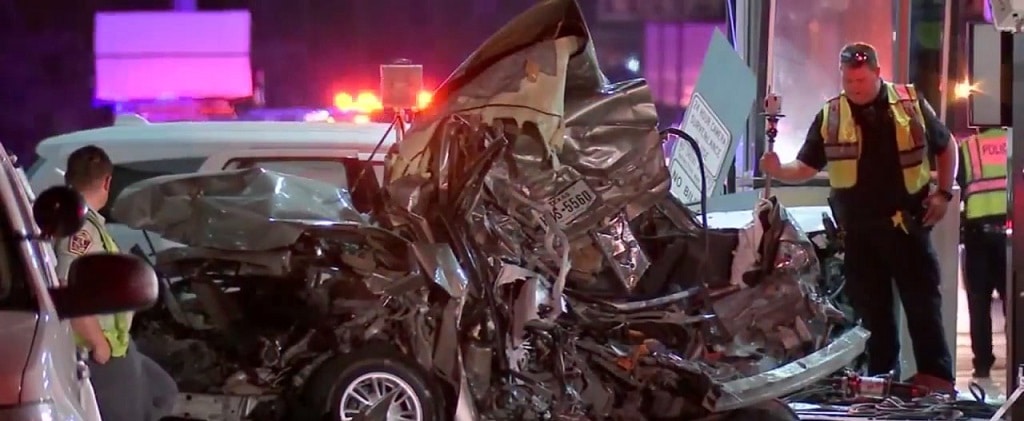The story of Nikki Catsouras is one of profound tragedy, privacy invasion, and the unintended consequences of viral content on the internet. Nikki Catsouras, an 18-year-old girl, lost her life in a devastating car accident in 2006. What followed was a media spectacle that sparked outrage and ignited debates over privacy rights and the ethical responsibilities of those who handle sensitive content. The public distribution of graphic photos from the crash scene turned the Catsouras family’s grief into a horrifying ordeal that they are still coping with to this day.
In this article, we will explore the life and tragic death of Nikki Catsouras, the events that followed her accident, and the broader implications of this story in today’s digital world. We will also address some frequently asked questions (FAQs) related to the case to provide a comprehensive understanding of its impact.
Who Was Nikki Catsouras?
Nikki Catsouras was a young woman from California, known for her beauty and vivacious spirit. Born on March 4, 1988, Nikki was the daughter of Lesli and Christos Catsouras. She had a loving family and was close to her two sisters. By all accounts, Nikki had a bright future ahead of her, with aspirations like many other young people her age. She was a college student and had interests in various fields, though she was still exploring her path in life.
Unfortunately, Nikki’s life came to a sudden and tragic end on October 31, 2006. While driving her father’s Porsche 911 Carrera, she lost control of the car at high speed on the 241 Toll Road in Lake Forest, California. The vehicle collided with a toll booth, resulting in a violent crash that took Nikki’s life instantly. The crash was so severe that it left the car and Nikki herself unrecognizable, marking the beginning of a heartbreaking saga for the Catsouras family.
The Spread of the Nikki Catsouras Photos
Shortly after Nikki’s accident, graphic photos of the crash scene were leaked onto the internet. These images, which showed the mangled wreckage and Nikki’s severely disfigured body, were taken by California Highway Patrol (CHP) officers who arrived on the scene. Despite strict protocols regarding the handling of sensitive information and images, two CHP employees emailed the photos to others outside the department. From there, the photos spread like wildfire across various websites and forums.
The Catsouras family was completely unprepared for the horror that unfolded. They first learned about the leak when an anonymous email containing the graphic images was sent to Nikki’s father with a cruel caption. Soon after, these photos began appearing on countless websites and social media platforms, making it impossible for the family to avoid seeing the gruesome reminders of their daughter’s tragic death.
The family attempted to have the photos removed from as many sites as possible, but the internet’s vastness made this task almost impossible. The images continued to circulate, even being shared with malicious intent by some individuals who sent the photos directly to the family, causing unimaginable emotional trauma.
Legal Battle for Privacy
The Catsouras family decided to take legal action against the California Highway Patrol for the unauthorized release of the images. They argued that the distribution of these graphic photos constituted an invasion of privacy and inflicted severe emotional distress. In 2009, the California Court of Appeal ruled in favor of the Catsouras family, allowing them to pursue their claim against the CHP.
The case was eventually settled out of court in 2012, with the family receiving a $2.37 million settlement from the CHP. Although this provided some form of justice, it could not undo the damage that had been done. The photos were still circulating online, and the emotional scars left by the ordeal would remain with the Catsouras family forever.

Impact on Privacy Laws and Internet Ethics
The Nikki Catsouras case has had a lasting impact on discussions about privacy laws and the ethics of sharing sensitive content on the internet. It highlighted the need for stricter controls over who can access and distribute graphic images of accident victims. While there are laws in place to protect the privacy of individuals, the internet has created new challenges for enforcing these laws.
The Catsouras family’s ordeal has also raised questions about the ethical responsibilities of those who encounter such content. When images or information are leaked, it often leads to public fascination, but this fascination can come at a significant cost to the people involved. The Nikki Catsouras case is a stark reminder of the human impact behind every viral story.
The Lasting Legacy of Nikki Catsouras
For many, Nikki Catsouras’ story serves as a cautionary tale about the darker side of the internet. It is a reminder that behind every shocking image or viral story, there are real people and families who are affected. The Catsouras family has since become advocates for stronger privacy protections and has worked to raise awareness about the consequences of sharing graphic content online.
The legacy of Nikki Catsouras is both a tragic story and a call to action. It urges society to think more deeply about the boundaries of privacy, empathy, and the responsibilities we all have when encountering sensitive material. Nikki’s death was a heartbreaking accident, but the public sharing of her final moments turned that tragedy into a lifelong nightmare for her family.
Conclusion
The story of Nikki Catsouras is one that resonates on multiple levels. It is a tragic reminder of the fragility of life and the potential consequences of our actions online. While Nikki’s death was a heartbreaking accident, the dissemination of graphic images from the scene added an additional layer of suffering for her family that no one should have to endure.
In today’s digital age, the line between public and private has become increasingly blurred. The Nikki Catsouras case has prompted many to reflect on the importance of compassion, empathy, and responsibility when dealing with sensitive information. It serves as a cautionary tale about the long-lasting impact of thoughtless actions and the importance of respecting the privacy of others, even in a world where information is so readily available.
Frequently Asked Questions (FAQs)
Why did the photos of Nikki Catsouras’ accident spread so quickly
The photos spread quickly due to the viral nature of the internet. Once the images were leaked by CHP employees, they were shared via email and posted on various websites, making it nearly impossible to control their distribution. The sensational nature of the images also contributed to their rapid spread.
What were the legal consequences for the CHP officers who leaked the photos
The two CHP employees responsible for the leak were suspended without pay, but no criminal charges were filed against them. The Catsouras family pursued a civil lawsuit, which eventually resulted in a $2.37 million settlement.
Have any laws changed as a result of the Nikki Catsouras case
While no specific laws were enacted directly due to this case, it has influenced ongoing discussions about privacy rights and the ethical handling of sensitive content. Some states have since considered or enacted stricter regulations on the dissemination of accident scene images.
Is it illegal to share the Nikki Catsouras photos today
While it is not explicitly illegal to share the photos, doing so may be considered morally and ethically wrong. Many websites have policies against sharing such content, and the Catsouras family has made numerous efforts to have the photos removed from public view.
How has the Catsouras family coped with the incident
The family has faced significant emotional trauma due to the widespread distribution of the photos. They have become advocates for privacy rights and continue to speak out about the need for compassion and responsibility on the internet.
Can anything be done to stop graphic content from going viral
While it’s challenging to prevent graphic content from going viral, there are steps that individuals and platforms can take. This includes responsible reporting by authorities, stricter policies by websites, and greater public awareness about the harm caused by sharing such content.




